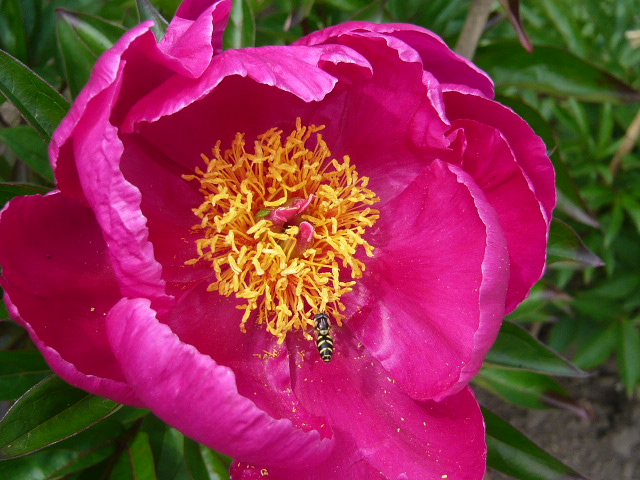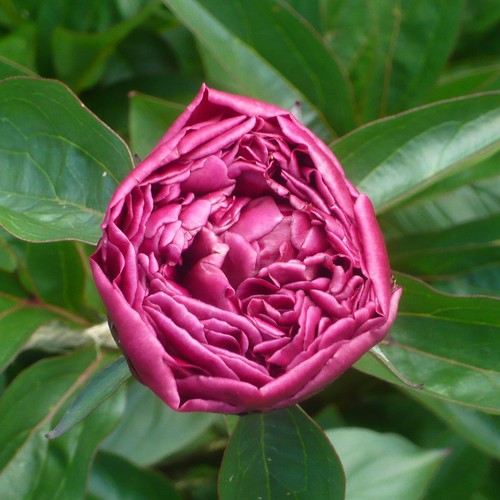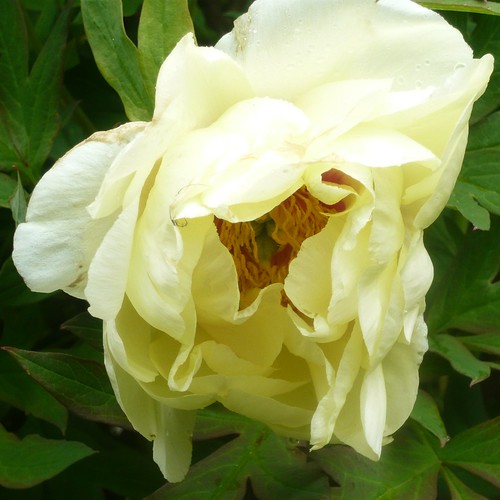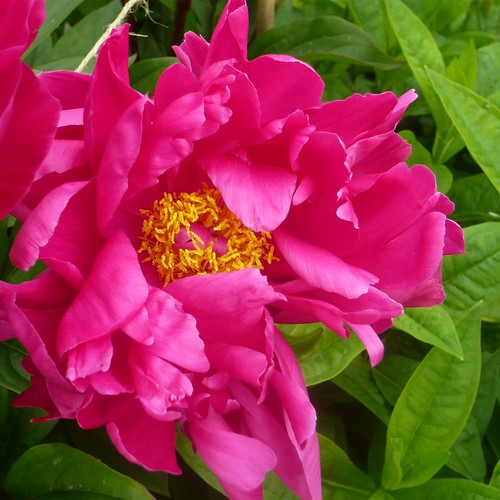Peonies, Peony, Paeonia, Paeoniaceae In Profusion
However you spell Peony you will still be captivated by this family of Northern Hemisphere perennials. Lush flowers and foliage are a major attraction but there is also the opportunity to study and become involved in more detail with a concise family of interesting and often endangered species.
Peony Society is the place to start an academic study of the subject but getting your hands in the soil with a couple of good plants is even better.
Aims of the Peony Society
1. To promote peonies as garden flowers.
2. To publish a quarterly newsletter and annual journal.
3. To stimulate scientific research on peonies.
4. To encourage the conservation of wild peonies and old cultivars.
5. To organise visits to gardens and to see wild peonies in their natural habitat.
There is a german data base of Paeonia, the only genus in the flowering plant family Paeoniaceae with a vast number of hybrids and photographs.
Peonies and special fertilizer from Thompson & Morgan
Clair Austin supplies Peonies and has some good tips on Tree Peonies which are my current favourite plant.
Here is a list of some Tree Peony varieties they have available.
Floral Rivalry’ (‘Hana Kisoi’) Gorgeous scented, deeply cupped flowers of light cherry pink. Each petal is darker at the base and curls around a centre of loose stamens.
‘Host of the Cherry Blossom’ (Yae zakura) Attractive double to semi-double soft pink flowers. The petal edges pale with time.
‘King of White Lion’ (‘Hakuojisi’) Magnificent semi-double pure white flowers of great size that are produced with great freedom. The base of each petal is smeared with purple. An easy variety to grow.
‘Shimi cho jamata’ (Long Life) A very beautiful variety with satiny lavender semi-double flowers. Almost black flares at the base. The flower forms an elegant cup and are are borne upright on the shrub.
‘Alice Harding’ (‘Kinko) A short variety with very large, lemon yellow flowers that hang downwards. These are heavily scented and the bush spreads outwards. Good for the front of a border. 60cm (2ft
‘Age of Gold’ A vigorous semi-double creamy yellow variety with red flares at the base of each petal. 90cm (3ft
‘Anglet’ Single yellow flowers, tinged around the edges with red, and around the stamens. Lots of flowers carried on a broad shrub. 90cm (3ft
‘Arcadia’ Single, clear yellow with small, almost ‘not there’ flares and deeply divided, ferny foliage. 90cm (3ft
‘Argosy’ The first lutea hybrid to be introduced. The single flowers are soft yellow , cupped and flushed with crimson at the base. 90cm (3ft).
For centuries Peonies have been great favourites of the Chinese and are one of their national flowers. Peonies are easy to care for once established.
Peonies are shrubby herbaceous plants that will come back perennially (year after year). They can live 75 years and still produce a brilliant profusion of flowers. Herbaceous means the leaves and stems die back at the end of the season and new growth will start again in Spring.
Growing Peonies
- Flowers are often strongly scented to attract bees and have double or single blooms.
- The colours are deep red through pink to white.
- Peonies do not like to be disturbed or moved once they are planted.
- Because they will live in the same spot for many years add some bone meal and good compost at the bottom of the planting hole.
- Peonies are best grow from plants bought at a nursery
- Plants are hardy but may make take some time to flower.
- Only plant Peonies at the same depth as they were grown, never deeper.
Tree Peonies are harder to grow successfully and cost more to buy but can have show stopping displays of flowers once they mature.

Peonies make a great herbaceous perennial which can be relatively low maintenance and provide great blousy blooms – excellent for cut flowers during the summer months.
Tips for Growing Peonies
- Don’t plant too deep. If the roots are planted too deep, they may not flower
- Peonies like full sun in an open position. Some shade is fine, but, it must not be full shade.
- They may need watering in the spring when the buds are forming. If the soil is too dry, they may not flower.
- A light dressing of manure in autumn or general fertiliser can help, but, generally they are not too fussy.
- They are relatively slug resistant !
- They are relatively disease free if given space to grow.
- The problem with Peonies is that the blooms become quite heavy and will fall over in a rain shower. They will need careful staking to remain upright in the garden.

Pink Peony

Purple Peony – one of the most common colours

If peonies fall over they can always be cut for inside
Caring for Peonies at BBC
I must start using the current name for my Peonies.
Whilst this and the next picture are correctly named I should record the variety names on all my photos.
Peonies look good when photographed as square pictures.





